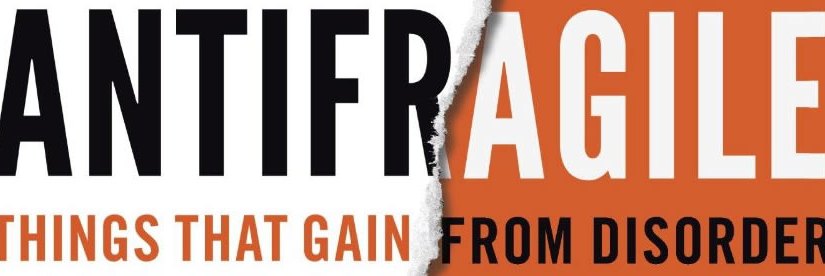Last week I wrote and presented my 4th speech from my Toastmasters Competent Communicator exercise book during our local club meeting. I recorded it and was quite satisfied with the result, so I decided to share it with you. I would appreciate your feedback! The speech’s transcript is available below.
A couple of years ago, I read a book that changed my life. In 2012, Nicholas Nassim Taleb published Antifragile: Things that gain from disorder. In his book, the Lebanese-American author redefines the opposite of fragility. Let me introduce you to antifragility.
What is antifragility?
Some things benefit from shocks. They thrive and grow when exposed to volatility, randomness and disorder. This is antifragility. It is beyond resilience or robustness. The resilient resists shocks and stays the same; the antifragile gets better.
To dig further into this concept, let’s first define fragility. Fragility is the quality of being easily broken or damaged. Spaghettis are fragile. Trust is fragile: a single lie can break it.
The income of a small ski resort is also fragile. It depends on the weather and the amount of snow.
Antifragility is the exact opposite. Yet, it is not robustness nor solidity. Not the ability to resist failure.
A wooden chopstick is solid, but not antifragile. It resists shocks or stress, but up to a certain point. Then it breaks. Multiple shocks do not make it stronger.
Antifragility is not resilience either. It is not adaptability, or the ability to recover from failure.
Friendships can be resilient. Someone hurts you. You forgive and feel good together again. Resilience.
The income of a computer scientist is also resilient. If I lose my job, I can easily find another one. But not necessarily with a higher salary. The shock does not make me better.
Antifragility is the quality of improving when exposed to volatility, randomness or disorder. Things that are antifragile love adventure, risk and uncertainty.
Consider a glowing stick you find at parties. If you must picture antifragility, remember this kind of stick. At first, it is nothing but a pale piece of plastic. But if you try to break it, bend it in all possible directions, shake it… not only does the stick recover and returns to its initial position, but it will become colorful and start glowing. It becomes a better stick.
Some ancient kings and emperors used to ingest small doses of poison to develop immunity.
A man looking for a girlfriend starts proposing to random attractive women to go out on a date. He is applying an antifragile strategy. Why? Because he strengthens his ability to accept rejection. At the same time, he opens the possibility of meeting his soulmate by accident.
How to become antifragile?
Balance your life with some reliable and safe strategies on one side, and risky or uncertain strategies with potentially huge benefits on the other. They may most likely fail, but the safe side will protect you.
You can have a stable job during the day, and write a book or develop a small business idea during your spare time. Who knows what could happen?
J.K. Rowling was working as a researcher and secretary when she wrote the first Harry Potter. Mark Zuckerberg developed Facebook while studying.
When playing with antifragility, expect the unexpected. Expect to be surprised. Leave space to randomness and disorder, so that amazing things can happen. Stop trying to control everything. Get shaken, and start glowing.
